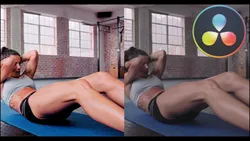
The Ultimate Color Grading Crash Course in DaVinci Resolve 
This course provides an introduction to color grading in DaVinci Resolve. It covers the basics of color correction, from the fundamentals of color theory to the techniques used to achieve an effective yet simple grade. It is designed to help beginners get started with color grading quickly and easily. ▼
ADVERTISEMENT
Course Feature
![]() Cost:
Cost:
Free Trial
![]() Provider:
Provider:
Skillshare
![]() Certificate:
Certificate:
Paid Certification
![]() Language:
Language:
English
![]() Start Date:
Start Date:
On-Demand
Course Overview
❗The content presented here is sourced directly from Skillshare platform. For comprehensive course details, including enrollment information, simply click on the 'Go to class' link on our website.
Updated in [March 06th, 2023]
This Ultimate Color Grading Crash Course in DaVinci Resolve is designed to teach beginners the perfect techniques for effective yet simple color correction. The course will cover basic color correction techniques, reading the scopes, working with Luts, and basic and simple skin retouching. Participants will learn the difference between color correction and color grading, and how to apply each to create the desired look. They will also learn how to use color correction and grading to accentuate the lights and build a creative look that helps the story’s message. By the end of the course, participants will have the skills to apply color correction and grading to music videos, Hollywood movies, commercials, and more.
[Applications]
After taking this course, students can apply their newfound knowledge of color grading in DaVinci Resolve to a variety of projects. They can use the basic color correction techniques to adjust the entire image, as well as read the scopes and work with LUTs to create a creative look. Additionally, they can use the basic and simple skin retouching techniques to enhance their projects.
[Career Paths]
1. Colorist: Colorists are responsible for the color correction and color grading of video footage. They use specialized software such as DaVinci Resolve to adjust the color, contrast, and brightness of video footage. Colorists are in high demand in the film and television industry, as well as in advertising and marketing. As technology advances, colorists are increasingly being asked to work with virtual reality and augmented reality footage.
2. Video Editor: Video editors are responsible for assembling video footage into a cohesive story. They use specialized software such as Adobe Premiere Pro to edit video footage, add effects, and create transitions. Video editors are in high demand in the film and television industry, as well as in advertising and marketing. As technology advances, video editors are increasingly being asked to work with virtual reality and augmented reality footage.
3. Motion Graphics Artist: Motion graphics artists are responsible for creating animated graphics for video projects. They use specialized software such as Adobe After Effects to create motion graphics, animations, and visual effects. Motion graphics artists are in high demand in the film and television industry, as well as in advertising and marketing. As technology advances, motion graphics artists are increasingly being asked to work with virtual reality and augmented reality footage.
4. Visual Effects Artist: Visual effects artists are responsible for creating realistic visual effects for video projects. They use specialized software such as Autodesk Maya to create 3D models, animate objects, and create realistic effects. Visual effects artists are in high demand in the film and television industry, as well as in advertising and marketing. As technology advances, visual effects artists are increasingly being asked to work with virtual reality and augmented reality footage.
[Education Paths]
Three degree paths that are recommended for learners of this course are:
1. Bachelor of Arts in Film and Television Production: This degree path provides students with the skills and knowledge necessary to produce and direct films and television programs. Students learn about the creative and technical aspects of filmmaking, including cinematography, editing, sound design, and post-production. This degree path also covers topics such as scriptwriting, production management, and media law. As the demand for content continues to grow, this degree path is becoming increasingly popular.
2. Bachelor of Arts in Animation: This degree path provides students with the skills and knowledge necessary to create animated films and television programs. Students learn about the creative and technical aspects of animation, including character design, storyboarding, and 3D modeling. This degree path also covers topics such as motion graphics, visual effects, and digital compositing. With the rise of streaming services, this degree path is becoming increasingly popular.
3. Master of Fine Arts in Color Grading: This degree path provides students with the skills and knowledge necessary to color grade films and television programs. Students learn about the creative and technical aspects of color grading, including color theory, color correction, and color grading. This degree path also covers topics such as color management, color science, and digital intermediate. As the demand for content continues to grow, this degree path is becoming increasingly popular.
Pros & Cons

Direct and simple explanations

Lots of examples

Makes images look great

Improved limited knowledge

Short and to the point

No advanced master class level

No explanation of Gamma, lift, gain, offset
Course Provider

Provider Skillshare's Stats at AZClass
Discussion and Reviews
0.0 (Based on 0 reviews)
Explore Similar Online Courses
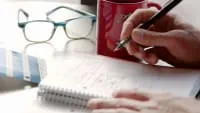
Graphic Design Careers: First Steps Online Class

Mechanisms of Gas Turbines

Python for Informatics: Exploring Information

Social Network Analysis

Introduction to Systematic Review and Meta-Analysis

The Analytics Edge

DCO042 - Python For Informatics

Causal Diagrams: Draw Your Assumptions Before Your Conclusions

Whole genome sequencing of bacterial genomes - tools and applications
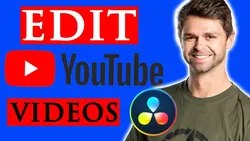
How to EDIT YOUTUBE VIDEOS in Davinci Resolve Free - From Beginner to YOUTUBER
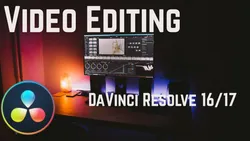
Video Editing - from beginner to professional
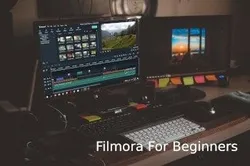
Video Editing With Wondershare Filmora - Beginners To Advanced
 Related Categories
Related Categories
 Popular Providers
Popular Providers
Quiz
 Submitted Sucessfully
Submitted Sucessfully
1. What is color correction?
2. What is color grading?
3. What is the percentage of color correction in the coloring process?
4. What is the most common use of color grading?
Correct Answer: music videos, Hollywood movies and commercials


Start your review of The Ultimate Color Grading Crash Course in DaVinci Resolve